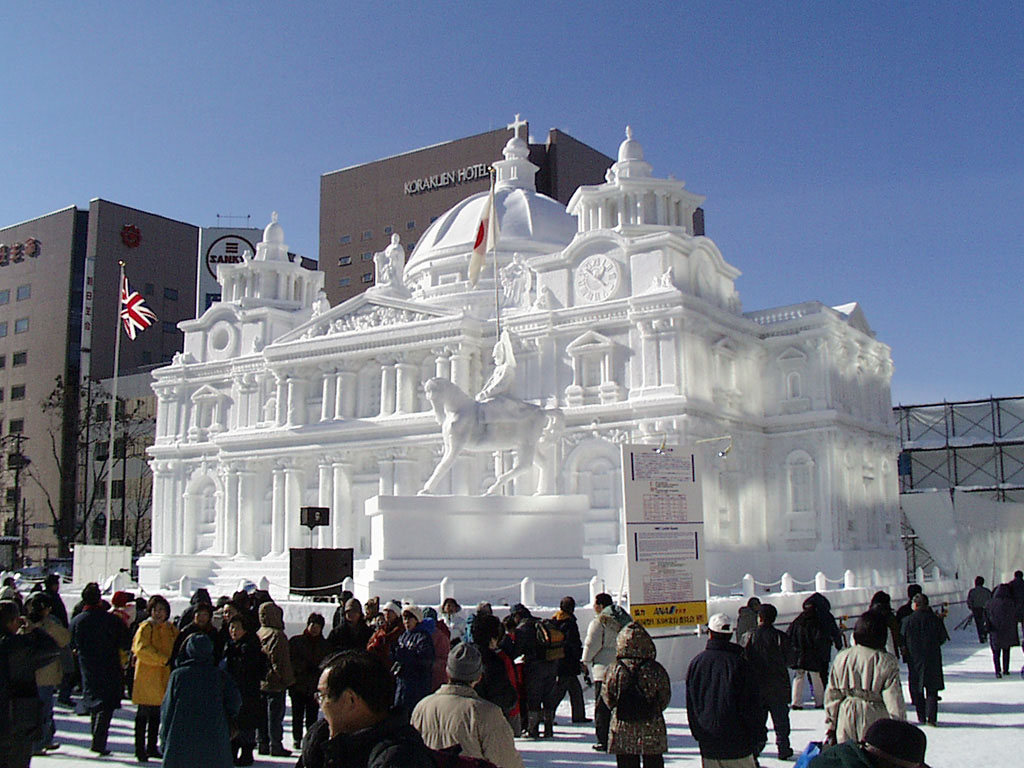

 History of Sapporo:
History of Sapporo:Sapporo is a very young city. Nevertheless, it spreads over 430 square miles, and is Japan's third largest city in area and fifth in population. It is the center of politics, commerce and culture for the major northern island of Hokkaido, and it is the hub of communications for all domestic and international travelers to the region.
Hokkaido, which was once called Ezo, was originally inhabited by the indigenous Ainu people, whose footprint can be found on the island in many of the place names. There are indications that Japanese settlers arrived on Hokkaido in the 7th century to trade with the Ainu, but it was not until 1821 that the Tokugawa Shogunate established a trading post on the Ishikari River, near present-day Sapporo.
In 1855, the Shogunate officially annexed the whole of Hokkaido and established government offices at Hakodate, on the south coast of the island. Two years later, two families moved into the Sapporo area and became the first official residents of the region. Soon after, the government changed the name of the island from Ezo to Hokkaido and serious colonization began.
The government established the Kaitakushi, or Development Commission, to plan and develop the island's resources. They decided to construct a capital for Hokkaido on the Ishikari Plain. Thus began the transformation of Sapporo from a small farming village into the major administrative center of Hokkaido. The Kaitakushi encouraged immigration by subsidizing transportation costs and providing food for settlers who were prepared to assist with defense preparations and development of the region.
The city planners created a green belt to divide the city into northern and southern portions. Today, Odori Park plays a major role in the seasonal events of the city by hosting major events such as the Sapporo Snow Festival, the Cherry Blossom Viewing and the Sapporo Summer Festival.
Construction took place at a furious pace. The Kaitakushi office was completed in 1871, with other government buildings, such as the Old Hokkaido Government Building (Akarengo) going up around it in the northern part of the city. Meanwhile, south of Odori Park, the commercial and entertainment districts started to take shape.
Settlers arriving from Honshu were encouraged by the Kaitakushi to introduce Western production technology for capital-intensive farming and to establish lumber mills, breweries and mines. To facilitate the introduction of technology, Sapporo Agricultural College was established in 1876. In the same year, Kaitakushi Brewery, Japan's first real beer brewery opened in Sapporo. The original Sapporo Brewery building is now home to the famous Sapporo Beer Garden.
In 1880, as the economy developed, based on raw materials and agriculture, Japan's third railroad was constructed to link Sapporo with Otaru, a major port to the west. Sapporo prospered as the city oversaw the transportation of agricultural produce, such as wheat, potatoes, corn and asparagus, as well as raw materials like timber and coal. Gradually, the city replaced horse-drawn trolley cars with electric streetcars.
The Hokkaido Government was established in 1886, and it quickly set about encouraging private investment in the region. An influx of businessmen from Honshu, followed by immigrants looking for higher paying jobs in the new territories, saw the area's population rise drastically from 1900 to 1920. Sapporo's post-war history is one of rapid growth and development as well, bringing the population to over one million by 1970.
Sapporo appeared on the world stage in 1972, when the city hosted the 11th Winter Olympic Games. To accommodate the Games, Sapporo instigated a development program that included construction of its subway system, underground heating for roads, and some of the best winter sports facilities available, including the fabulous Okurayama Ski Jump.
Adding to its reputation as a sporting city, Sapporo was a venue for group games in the 2002 Korea/Japan World Cup. In preparation for this, the city constructed the Sapporo Dome, a multipurpose venue that is one of the most modern stadiums in the country.
Sapporo is unlike any other Japanese city. It has wide streets, parks and green belts, and its sporting facilities are second to none. In such a short time, Sapporo has grown from a trading post to a city that is known throughout the world.
Source Article : http://uk.holidaysguide.yahoo.com/





No comments:
Post a Comment